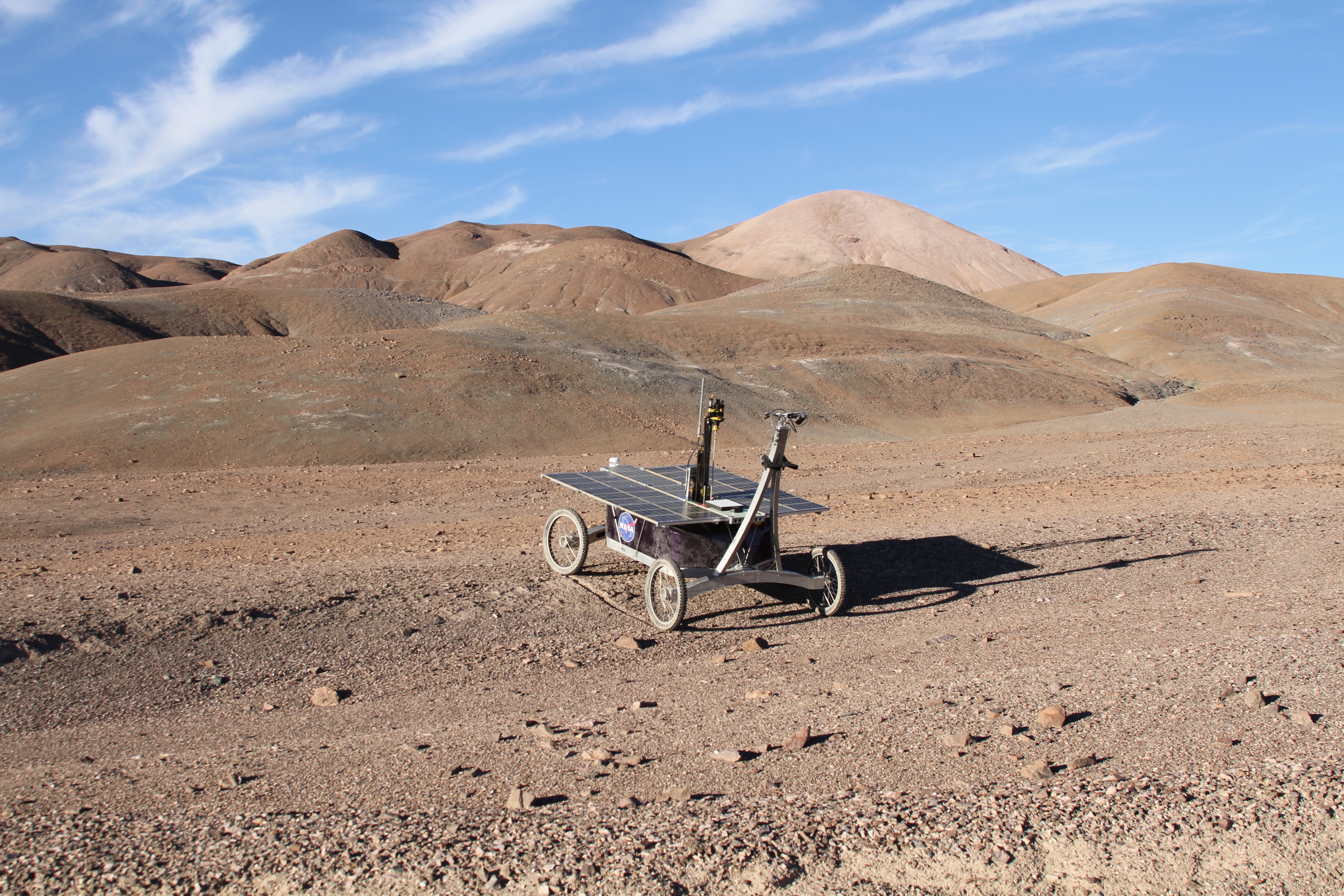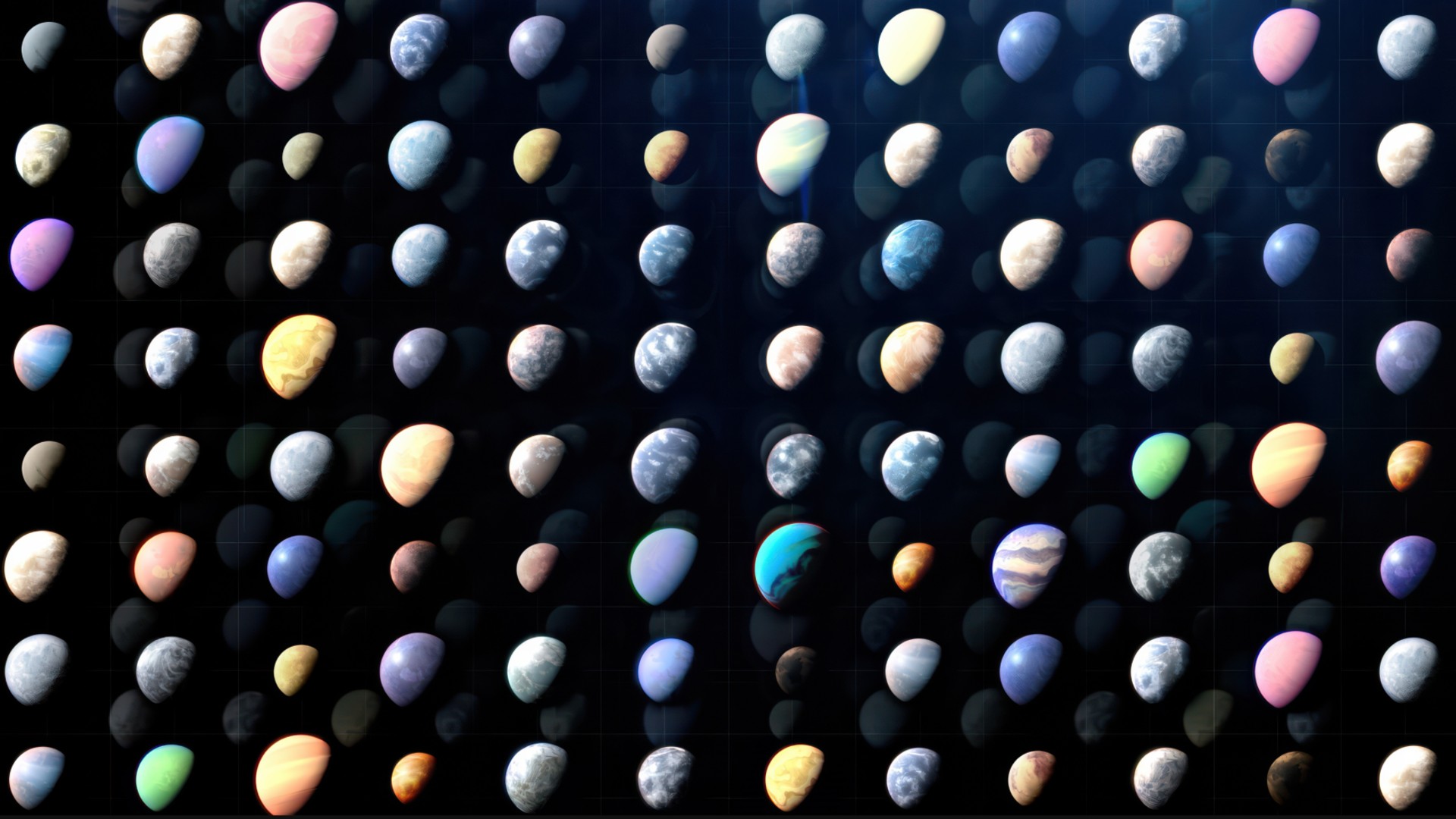Good News for Mars Life Hunt? Rover Digs Up Microbes in Chilean Desert

Drilling for signs of life on Mars, as two rover missions plan to do soon, is a pretty sound strategy, a new study suggests.
An autonomous rover managed to dig up subsurface microbial life during a trial mission in Chile's cold and dry Atacama Desert, a frequent Red Planet stand-in.
"We have shown that a robotic rover can recover subsurface soil in the most Mars-like desert on Earth," study co-author Stephen Pointing, a professor at Yale-NUS College in Singapore, said in a statement.
Related: The Life on Mars Search: A Photo Timeline
"This is important, because most scientists agree that any life on Mars would have to occur below the surface to escape the harsh surface conditions where high radiation, low temperature and lack of water make life unlikely," Pointing said.
The Atacama rover was equipped with a drill-and-sampling device, which was funded by NASA and designed by the Robotics Institute at Carnegie Mellon University in Pittsburgh. This system allowed the robot to snag material up to 31.5 inches (80 centimeters) beneath the parched surface.
Pointing and his colleagues let the rover do its thing, then compared the robot's haul to samples collected by hand. Both methods produced similar results, DNA sequencing work revealed.
Breaking space news, the latest updates on rocket launches, skywatching events and more!
"We found microbes adapted to high salt levels, similar to what may be expected in the Martian subsurface," Pointing said. "These microbes are very different from those previously known to occur on the surface of deserts."
The team also found microbial life to be patchily distributed — not a big surprise, given that water and nutrients are hard to come by in the Atacama.
"These results confirm a basic ecological rule that microbial life is patchy in Earth's most extreme habitats, which hints that past or present life on other planets may also exhibit patchiness," study lead author Kim Warren-Rhodes and co-author Nathalie Cabrol, both of the SETI (Search for Extraterrestrial Intelligence) Institute in Mountain View, California, jointly said in the same statement.
"While this will make detection more challenging, our findings provide possible signposts to guide the exploration for life on Mars, demonstrating that it is possible to detect life with smart robotic search and sampling strategies," the two researchers added.
Such signposts may be followed soon on Mars, by NASA's 2020 rover and the joint European-Russian ExoMars rover, which was recently named Rosalind Franklin. Both of those wheeled robots will launch toward the Red Planet in mid-2020 and begin hunting for signs of ancient life after touchdown in early 2021.
NASA's rover will use a drill to collect near-subsurface samples, some of which will be cached for future return to Earth (by a mission that's not yet on the American space agency's books). Rosalind Franklin will tote a drill of its own, which will let that robot probe up to 6.5 feet (2 meters) beneath the red Martian sands.
The new study was published online today (Feb. 28) in the journal Frontiers in Microbiology.
Mike Wall's book about the search for alien life, "Out There" (Grand Central Publishing, 2018; illustrated by Karl Tate) is out now. Follow him on Twitter @michaeldwall. Follow us on Twitter @Spacedotcom or Facebook.

Michael Wall is a Senior Space Writer with Space.com and joined the team in 2010. He primarily covers exoplanets, spaceflight and military space, but has been known to dabble in the space art beat. His book about the search for alien life, "Out There," was published on Nov. 13, 2018. Before becoming a science writer, Michael worked as a herpetologist and wildlife biologist. He has a Ph.D. in evolutionary biology from the University of Sydney, Australia, a bachelor's degree from the University of Arizona, and a graduate certificate in science writing from the University of California, Santa Cruz. To find out what his latest project is, you can follow Michael on Twitter.

